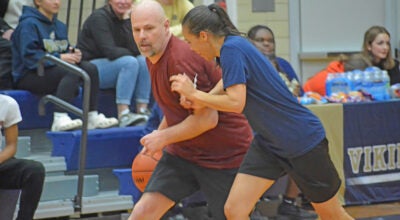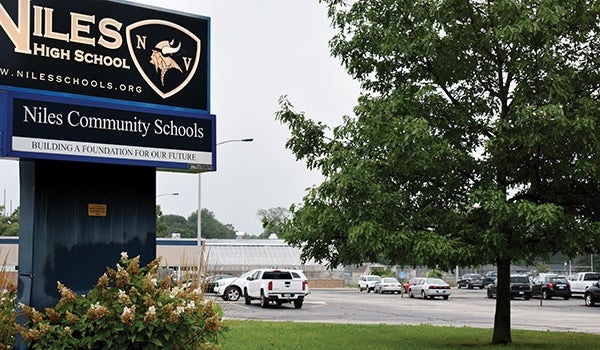Keeping up in the digital age: Brandywine board approves purchase of 130 Chromebooks
Published 1:37 pm Thursday, May 1, 2014
As students from the digital age make their way through their education, administrators at Brandywine Community Schools are working hard to keep up with their technology-based learning styles.
At a school board meeting Monday night held in Brandywine Middle/Senior High School’s Carlson Lecture Hall, principal Pat Weckel showed the board some of the steps he and his staff are taking to remain up-to-date and ahead of the curve.
“It’s just the future of education. (Technology) makes learning easier for students. They’re always on the computer, so learning with a computer makes them learn things easier,” Weckel said.
Weckel showed the board steps that have already been taken — including the purchase of interactive white boards — and “baby steps” the staff is currently taking to test what he believes will be the future of schools across the state.
Interactive whiteboards
Board members Monday were given the chance to experience math class using new technology when algebra teacher Terry Borr walked them through a class using some of the techniques he has acquired over the past few years.
Borr showed his “students” some of the benefits of using the interactive whiteboards that were installed last fall. The tool allows teachers to write on their white boards using a projector screen that is connected to their computer screen. This way, teachers can easily switch between writing on the board to visiting a website to using the document camera without the hassle of moving equipment to transition from medium to medium.
“I can even save my notes to post to the website so students can view them at home,” Borr said.
Now that staff at the high school have been given the chance to work with new technology, administrators have decided to give students new tools as well.
Chromebooks
The five board members present Monday — Dennis Cooper, Doris Schoenleber, Dennis Hinsey, Mike Shelton and Jim Curran — approved the $32,630 purchase of 130 new Chromebooks to be used by elementary students and seventh graders beginning next fall.
“Seventh grade students will be given the opportunity to have Chromebooks in a one-to-one environment. They’ll be doing all of their work on them, whether it’s taking notes, using apps for math, writing papers,” said Doug Fox, technology director. “The plan is that when these kids move to eighth grade, they’ll keep the same Chromebooks and they’ll purchase another set for the incoming seventh graders. If it works well, eventually we’ll be one-to-one grades seven to 12.”
Fox said that the move to a one-to-one model has been in the works for quite some time, but new grants and programs have made it so that the purchase is more affordable for the school district.
“I don’t want to waste our money. I want to make sure we’re at a point where we can do this and be successful,” Fox said.
Fox said he believes the move to get students computers is going to be almost necessary within the next few years as other outlets catch up technologically.
“Most publishers have seen the writing on the wall and they’re going to be switching to digital textbooks. It really doesn’t make a lot of sense for schools to spend a lot of money on new paper textbooks when most will be digital soon,” he said.
While staff are aware of the benefits of adding technology to the classroom, they said they are cognizant that there must be a balance between computer- and teacher-instructed learning. Moving forward, Weckel and his staff have decided to implement a blended learning technique.
Blended learning
“Research that I’ve read shows that blended learning is more successful than all-online learning,” Fox said. “There was a big kick for awhile for students to take all online classes. I don’t think that research shows that’s necessarily successful. They still need that instruction time.”
In May, 10 high school teachers will begin taking a 30-hour course to learn how to implement the technique into their own classrooms.
“The reason we’re doing this is two-fold. It will help kids who want to work ahead so they can work ahead. For kids who need more remediation, it gives them more time to move ahead. It takes kids from where they are and tries to take them further,” Weckel said.
Weckel and a number of staff members visited other schools using the model to see how it worked. The group liked the concept so much that they applied to be one of the test schools for the program, and was chosen as one of only 30 pilot schools in the state.
“We want to get ahead of the game, and this will help us,” he said. “These changes — they’re not a complete change of education. It’s just helping kids differently in the best way that we can.”





